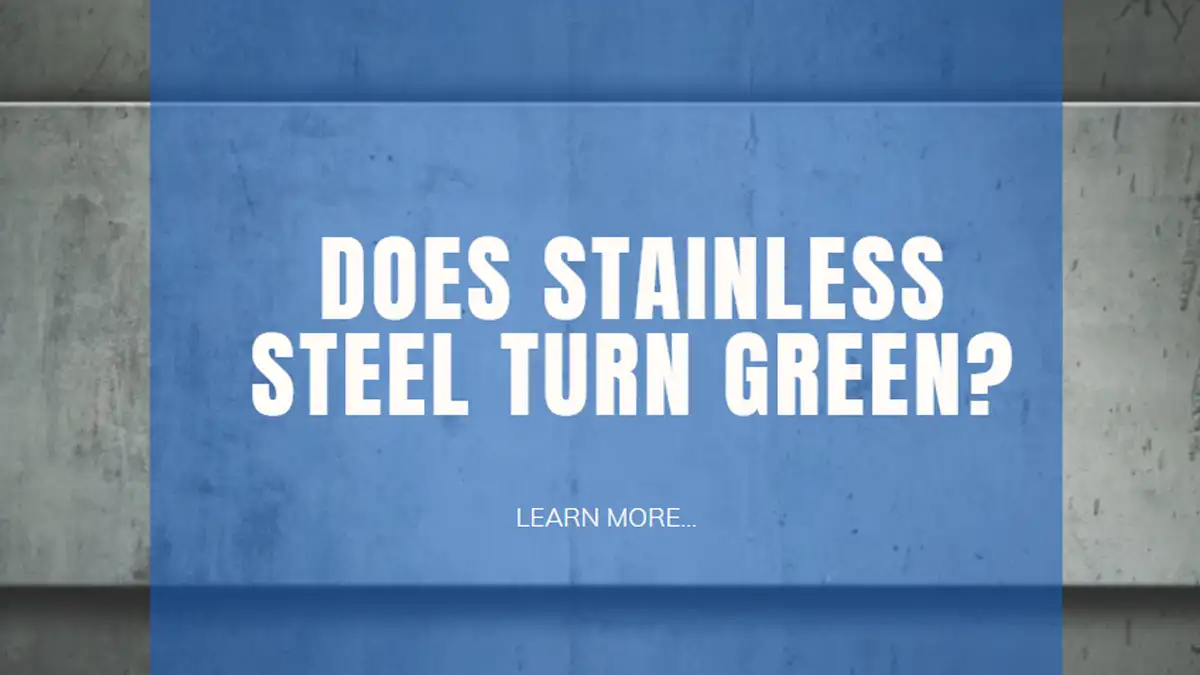Stainless steel is a very well-known material most people use this material in daily life.
Stainless steel is used in several applications due to its outstanding strength, durability, and corrosion resistance properties.
Stainless steel has a minimum of 10.5% chromium in its composition along with iron, nickel, chromium, and carbon.
Along with the properties of steel many people wonder does stainless steel turns green.
In this article, we will discuss the factors why stainless steel turns into green color and also the prevention of this particular problem.
Chemical Composition and Properties of Stainless Steel
Explain the Chemical Composition of Stainless Steel
In the chemical composition of this iron-based alloy chromium and nickel are basic alloying elements.
Chromium plays a very important role in enhancing the corrosion resistance of stainless steel and generating a tight oxide coating that prevents iron-based metals from further oxidation.
Nickel improves stainless steel’s strength and corrosion resistance. The following table shows the chemical composition of some common grades of stainless steel:
Alloy Type | Cr
% | Ni
% | C
% | Mn
% | Si
% | S
% | P
% | Mo
% | Others
% |
201 | 16-18 | 3.5-5.5 | 0.15 | 5.5-7.5 | 1.00 | 0.030 | 0.06 | – | N 0.25% Max |
302 | 17.00-19.00 | 8.00-10.00 | 0.15 | 2.00 | 1.00 | 0.030 | 0.045 | – | – |
304 | 18.00-20.00 | 8.00-11.00 | 0.08 | 2.00 | 1.00 | 0.030 | 0.045 | – | – |
316 | 16.00-18.00 | 10.00-14.00 | 0.08 | 2.00 | 1.00 | 0.030 | 0.045 | 2.0-3.0 | – |
316L | 16.00-18.00 | 10.00-14.00 | 0.03 | 2.00 | 1.00 | 0.030 | 0.045 | 2.0-3.0 | – |
321 | 17.00-19.00 | 9.00-12.00 | 0.08 | 2.00 | 1.00 | 0.030 | 0.045 | – | Ti: Min (5xC %) |
410 | 11.50-13.50 | – | 0.15 | 1.00 | 1.00 | 0.030 | 0.040 | – | – |
416 | 12.00-14.00 | – | 0.15 | 1.25 | 1.00 | 0.15 Min | 0.060 | – | – |
Introducing the Corrosion Resistance and Strength of Stainless Steel
Generally Stainless steel is divided into main fours or groups or families such as Austenitic stainless steel, martensitic stainless steel, ferritic stainless steel, and duplex stainless steel.
All these have different chemical compositions, properties, and applications. These families are subdivided into different grades (201,304,410 etc.).
The concentration of chromium and nickel is different for different grades whereas these two elements can increase the strength and corrosion resistance of stainless steel.
Overall, stainless steel’s corrosion resistance and strength are among its most essential features.
Stainless steel has high corrosion resistance, which means it does not rust easily when exposed to air, water, or other media.
Stainless steel’s strength is determined by the composition of the alloy and the process of treatment used.
Due to its outstanding properties, stainless steel is used wide variety of applications such as construction, automobile, aerospace, medical equipment, food processing, and household utensils.
Why Stainless Steel Turn Green?
Generally, stainless steel exhibits good corrosion resistance and it is not rusted by way of the iron.
When the surface of stainless steel is exposed to air or water, an oxidation reaction occurs.
The chromium present on the surface of the steel reacts with oxygen to form a chromium oxide layer on the surface of the stainless steel, this compound is more stable than iron oxide due to the chromium oxidation.
This chromium oxide layer is usually green; therefore some people believe stainless steel will turn green.
However, unlike iron rust, this oxide film is often a surface layer that does not affect the entire metal structure.
The iron ion in ordinary steel changes chemically due to oxidation, resulting in iron oxide, it is known as rust.
Compared to iron, chromium in stainless steel forms a dense chromium oxide coating when oxidized, which can protect the surface of the steel.
Furthermore, stainless steel contains additional elements such as nickel and molybdenum, which can improve its strength and corrosion resistance.
Factors of Stainless Steel Turn Green
Although a green layer is formed on the surface of stainless steel due to the formation of a chromium oxide layer in the specific conditions this layer can be destroyed or changed into uneven oxide by some factors. Some of these factors are given below:
Concentration of oxygen
A high concentration of oxygen will accelerate the oxidation reaction rate on the surface of the stainless steel, which will speed up the process of turning the surface green.
Chemical Composition of stainless steel
Stainless steel is composed of multiple elements, some of which may increase the metal’s tendency to oxidation. These elements have the potential to combine with chromium to generate compounds that will degrade the oxide film on the stainless steel’s surface and the result shows in the form of a green color.
Temperature
High temperatures may result in the oxidation reaction rate on the surface of stainless steel increasing and possibly coloring the material green.
Humidity
In a more humid environment, the surface of stainless steel collects more moisture and oxygen, this practice can enhance the rate of oxidation, and the surface color changes into green rapidly.
How to Prevent Stainless Steel Turn Green?
Here are some methods to slow down the rate of oxidation of the stainless steel surface and prevent the surface of stainless steel from turning green.
Choosing a suitable stainless steel alloy
Different grades of stainless steel exhibit distinct properties related to oxidation and corrosion resistance. The oxidation process of the stainless steel surface can be slowed down by choosing an alloy of stainless steel appropriate for a particular application and environment.
Protective coating
In certain unique circumstances, the surface of the stainless steel can be covered with a protective substance, like paint or varnish, to lessen interaction with the surroundings and stop the stainless steel from turning green.
Maintain a clean surface
The surface of stainless steel must be free from all impurities like dirt, water grease, or oil. The neat and clean surface can slow the rate of oxidation reaction and stop the surface of stainless steel from turning green.
Conclusion
Stainless steel is a versatile material due to its unique properties but the oxidation process can turn its surface into green which may affect its functionality and lustrous appearance.
No need to worry you can easily protect stainless steel from this green layer by using the proper grade of stainless steel alloy and suitable methods of prevention.












